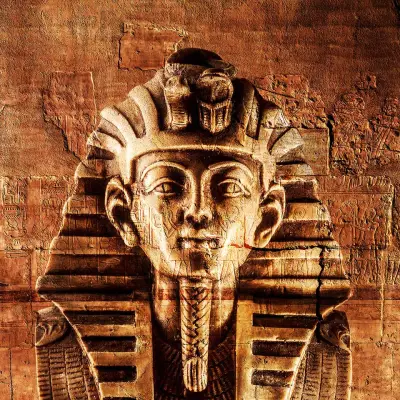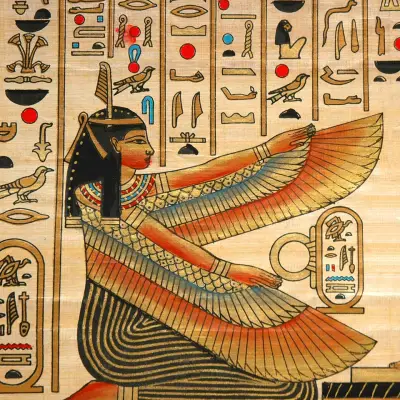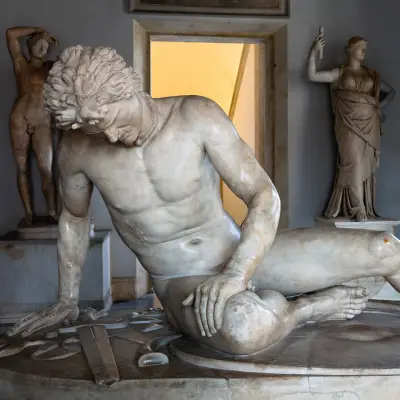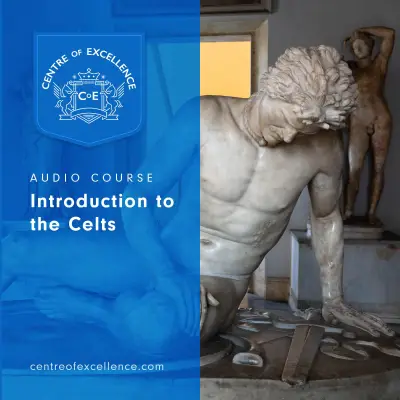As the leader of the Titans and the father of Zeus, Cronus holds a significant place in Greek mythology. Known for his complex personality and dramatic myths, Cronus’ fascinating story is a favourite of mythology enthusiasts. Let’s explore who Cronus was, his powers, symbols, and why he remains such an important figure.
Jump to:
Recommended for you!
Best SellersWho Was Cronus?
In Greek mythology, Cronus (sometimes spelled Kronos) was one of the Titans, a powerful race of deities who ruled before the Olympian gods. He was the youngest son of Uranus (the sky) and Gaia (the earth). Cronus is best known for overthrowing his father, Uranus, and later being overthrown himself by his own son, Zeus.
Cronus is often associated with time and is sometimes conflated with Chronos, the personification of time in Greek mythology. While the two figures are distinct, they share symbolic connections that add depth to Cronus’ story. Cronus’ name became synonymous with endings, transitions, and the cyclical nature of time.
Cronus’ Myths
Cronus’s story is filled with rebellion, power struggles, and dramatic twists. Here are three of his most famous myths:
Cronus’ Rebellion Against Uranus
The first myth of Cronus centres on his rebellion against his father, Uranus. Uranus, fearing the power of his children, the Titans, imprisoned them deep within the earth. Gaia, their mother, grew resentful of this cruelty and sought to free her children. She enlisted Cronus, the youngest and boldest Titan, to overthrow Uranus.
Armed with a sickle forged by Gaia, Cronus ambushed his father and successfully overthrew him, taking control of the cosmos. This act marked the beginning of the Titan era.
Cronus Swallows His Children
Cronus’ reign as king of the Titans was marked by fear and paranoia. Remembering how he had overthrown Uranus, Cronus feared that his own children would one day rise against him. To prevent this, he swallowed each of his children at birth.
However, his wife, Rhea, could not bear to lose her youngest child, Zeus. She devised a plan, tricking Cronus into swallowing a stone wrapped in swaddling clothes instead of the baby. Zeus was secretly raised in safety, away from Cronus’ grasp.
The Titanomachy and Cronus’ Downfall
The final myth in Cronus’ story involves the dramatic war between the Titans and the Olympians, known as the Titanomachy. When Zeus came of age, he confronted Cronus, forcing him to regurgitate his siblings: Hades, Poseidon, Hera, Demeter, and Hestia. Together, they waged a ten-year war against Cronus and the other Titans.
Ultimately, Zeus and the Olympians triumphed, and Cronus was overthrown. In some versions of the myth, Cronus was imprisoned in Tartarus, while in others, he fled to a distant realm or was reconciled with Zeus, marking the end of the Titan era and the rise of the Olympian gods.
What Powers Did Cronus Possess?

The powers of Cronus reflect his immense strength, cunning, and the role he played in Greek mythology.
- Immense Strength: As the youngest and boldest of the Titans, Cronus possessed extraordinary physical power. This strength enabled him to overthrow his father, Uranus, and seize control of the cosmos, establishing himself as the ruler of the Titans.
- Strategic Mind: Beyond physical might, Cronus was highly strategic and intelligent. His cunning allowed him to successfully plan and execute his rebellion against Uranus and maintain control over the Titan realm during his reign. However, this same strategic thinking also fuelled his paranoia, leading to the drastic act of swallowing his children to secure his power.
- Connection to Nature and Cycles: While not explicitly the god of time, Cronus was closely tied to natural cycles such as harvest and renewal. His role as a harvester of power and as a symbol of cyclical transitions aligns with the idea of time’s passage, reinforcing his association with life, death, and rebirth. These connections underline the duality of his character—both a nurturer and destroyer.
Symbols Associated with Cronus

The symbols connected to Cronus are rich in meaning, reflecting the themes of his myths and the lessons they impart.
- The Sickle or Scythe: Cronus is often depicted holding a sickle or scythe, the tool he used to overthrow his father, Uranus. This symbol is closely tied to agriculture, harvest, and the passage of time. The sickle represents the cyclical nature of life, death, and rebirth, embodying the themes of renewal and transformation central to Cronus’ story.
- Time and Its Cycles: Although Cronus is not explicitly the god of time, he is frequently associated with its passage. Time-related imagery, such as the hourglass, has come to represent his connection to transitions and endings. These symbols highlight Cronus as a figure of change, reflecting the natural rhythms of creation and destruction.
- Artistic Depictions: Cronus has been a compelling subject for artists over the centuries, often portrayed in dramatic moments such as wielding his sickle or devouring his children. These depictions capture the complexity of his character, blending his immense power with the fear and paranoia that ultimately led to his downfall.
Why Is Cronus Special?
Cronus’ story is one of complexity, highlighting themes of power, fear, and inevitable change. His actions shaped the world of Greek mythology, setting the stage for the rise of the Olympian gods. As a figure who represents both destruction and renewal, Cronus embodies the paradoxical nature of time itself.
Cronus is also fascinating because of the moral ambiguity in his story. Was he evil for devouring his children, or was he simply trying to protect his throne? These questions make his character more nuanced, inviting endless interpretation and discussion.
Cronus in Modern Culture
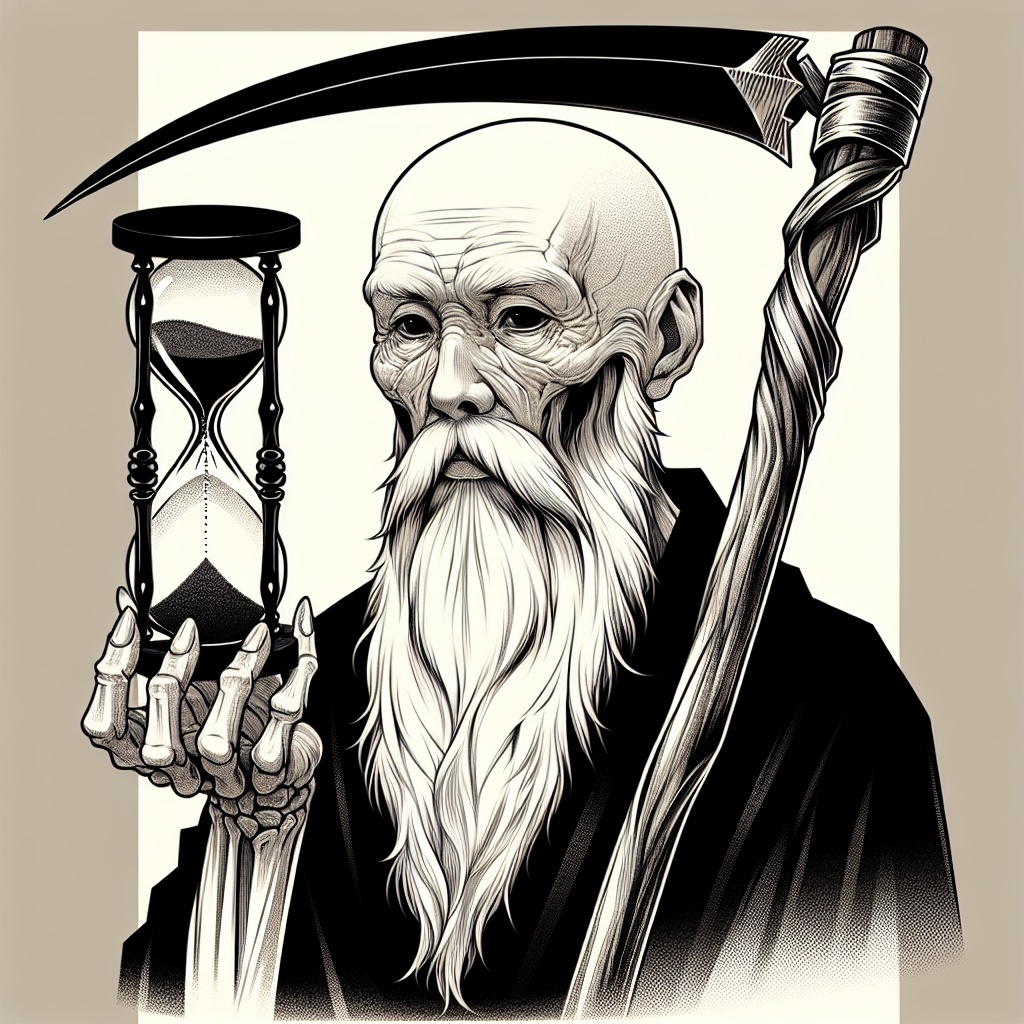
Cronus’ legacy extends far beyond ancient Greek mythology, continuing to inspire literature, art, and popular media. His story remains relevant due to its exploration of themes such as power, rebellion, and the inevitability of change.
Cronus in Art and Literature
Cronus has been a recurring figure in art and literature, depicted in dramatic moments that capture the essence of his myth. From classical sculptures to modern interpretations, his image often evokes the tension between creation and destruction.
In literature, Cronus serves as a symbol of transition and the cyclical nature of life, appearing in works that examine power dynamics and the consequences of ambition. These timeless themes ensure that Cronus continues to resonate with audiences today.
Cronus as a Cultural Symbol
In contemporary culture, Cronus is frequently associated with the concept of “Father Time,” blending his myth with the figure of Chronos, the personification of time. This association highlights his role as a symbol of endings and new beginnings.
His story also serves as a reminder that even the most powerful figures are subject to the passage of time and the cycles of history, making Cronus a compelling metaphor for change and renewal in modern storytelling.
Recommended for you!
Best SellersFrequently Asked Questions about Cronus
Was Cronus always a villain?
Cronus is not strictly depicted as a villain. His actions, such as overthrowing Uranus and swallowing his children, were driven by a mix of ambition, fear, and self-preservation. These qualities make him a complex figure rather than a straightforward antagonist.
Did Cronus have any followers or worshippers?
While Cronus was not worshipped as widely as the Olympian gods, he did have a modest following in ancient Greece, especially among agricultural communities. Festivals like Kronia honoured him as a god of the harvest and symbolised a time of equality and abundance, reflecting the Golden Age of his reign.
What happened to Cronus after his defeat?
The myths vary about Cronus’ fate after Zeus defeated him. In some accounts, Cronus was imprisoned in Tartarus with the other Titans. In others, Zeus forgave him, and Cronus was allowed to rule the Isles of the Blessed, a heavenly realm for the souls of the virtuous.
Why is Cronus connected to the Golden Age?
The Golden Age refers to the period during Cronus’ rule, described as a time of peace, prosperity, and harmony when humans lived without toil or suffering. This era became a symbolic representation of an idealised, utopian past in Greek mythology.
Why is Cronus associated with the harvest?
Cronus is closely tied to the harvest because of his connection to the sickle or scythe, which he used to overthrow Uranus. This tool, traditionally used in agriculture, symbolises the cycle of planting and reaping, life and death. His association with the harvest reinforces his role as a figure of natural cycles and renewal.
What role did Rhea play in the myths of Cronus?
Rhea, Cronus’ wife and sister, played an important role in the myths. She saved her youngest son, Zeus, by tricking Cronus into swallowing a stone wrapped in swaddling clothes instead of the baby. Rhea’s cleverness ensured Zeus’ survival, ultimately leading to Cronus’ defeat and the rise of the Olympian gods.
Does Cronus appear in any other cultures or mythologies?
While Cronus is specific to Greek mythology, similar themes of generational conflict and cyclical power appear in other cultures’ myths. For example, in Roman mythology, Cronus was equated with Saturn, a god associated with agriculture and the Golden Age. The Saturnalia festival in Rome celebrated Saturn with themes of abundance and social equality, much like the Kronia festival in honour of Cronus.
What lessons can be learned from the myths of Cronus?
The myths of Cronus teach important lessons about power, fear, and the consequences of one’s actions. His story highlights the dangers of paranoia and the futility of trying to escape fate. It also reflects the natural cycles of life, showing that endings often lead to new beginnings. These timeless themes make his myths relevant even today.
Study Greek Mythology for £29
Cronus’ myths offer a glimpse into the fascinating complexities of Greek mythology. If you’re captivated by these ancient stories and their modern interpretations, deepen your understanding with our Greek Mythology Diploma Course at Centre of Excellence. This fascinating course offers an in-depth exploration of the myths, legends, and cultural significance of ancient Greece. By enrolling today, you can enjoy a discounted price of just £29.

